Are you a cat lover who has been considering adding one of these long-legged creatures to your four-legged family? With their unique traits and personalities, cats bring a lot of joy into the home.
But when regular domesticated cats just don’t cut it, there are always some special breeds with extraordinary builds like the classic Maine Coon or elegant Siamese!
From graceful lean figures to muscular stocky frames, we’ve rounded up six of our favourite long legged cat breeds that have captivated us with their charm and grace.
So if you’re in the market for something new and exciting – read on to explore an array of furry felines perfect for your next pet companion!
Long-Legged Cats
Oriental Shorthair
The Oriental Shorthair is a stunning breed that combines the elegance of the Siamese with a wild-cat appearance.
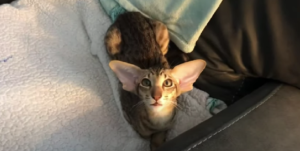
Their coats come in a variety of colours, making them unique amongst all other breeds.
Abyssinian
The Abyssinian is an ancient breed that originated in Egypt and has a sleek, muscular body. They are known for their long slender legs which allow them to run fast if they ever need to escape danger.

Abyssinians also have a thick coat that can range from solid colours like red or blue to tabbies with different markings. [1]
Savannah Cat
The Savannah Cat is a hybrid of the African Serval and a domestic cat. The result is an elegant animal that has long legs, large ears, and an impressive coat pattern. They are also known for their intelligence and can be trained to do tricks just like a dog!
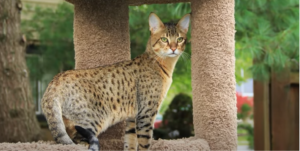
Chausie Cat
The Chausie Cat is a hybrid breed created by crossing wild jungle cats with domestic cats.
Their coats come in a range of colours including browns, tans, and black. [2]
Serengeti Cat
The Serengeti Cat is a hybrid breed that has been developed by crossing Bengal Cats and Oriental Shorthairs.

This combination of wild cats and domestic cats have resulted in an animal with a regal appearance, long legs, and large ears. They are also known for their intelligence and can be trained to perform tricks!
Egyptian Mau
The Egyptian Mau is a rare and ancient breed. They have a muscular body with sleek muscles and long legs that help them move quickly if they need to escape danger.
Their coats come in shades of silver, bronze, or black. They are also known for their intelligence and can be trained to do tricks!
Bengal Cat
The Bengal Cat is a hybrid breed created by crossing an Asian Leopard Cat with domestic cats.
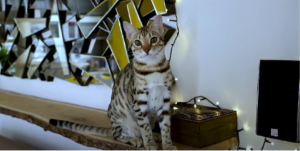
The resulting animal has a wild-cat appearance and long legs. Their coats can range from solid colours like brown, black, or silver to spotted tabbies with different markings. They are also known for their intelligence and can be trained to perform tricks.
Arabian Mau
The Arabian Mau is a unique breed that has long legs and a sleek, muscular body. They have large eyes and ears, and their coats come in shades of black or silver. They are known for their intelligence and can be trained to do tricks.
Turkish Angora
The Turkish Angora is a graceful breed that has long legs, tufted ears and a silky white coat. They are known for their intelligence and can be trained to do tricks.
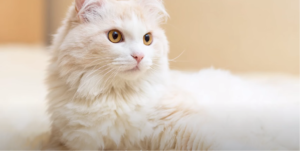
Serval Cat
The Serval Cat is a wild breed that has long legs and large ears. They have a slender figure and their coats come in various colours including brown, black, or yellow.
This breed is not recommended as a pet due to its wild nature and tendency to escape when given the chance.
Cornish Rex
The Cornish Rex is a slender breed with long legs and an elegant coat. They have large ears and their coats come in different colours including black, cream, or blue.
Japanese Bobtail
The Japanese Bobtail is a small breed with long legs and a bouncy tail. They have large ears, fluffy fur, and their coats come in shades of white, black, or brown. They are known for their intelligence and can be trained to do tricks.
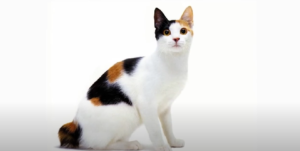
Sphynx
The Sphynx is a hairless breed that has long legs and large ears. They have a muscular body and their skin comes in shades of pink, black, or grey. They are known for their intelligence and can be trained to do tricks.
Siamese
The Siamese is a beautiful breed that has long legs and a slender body. They have large ears and their coats come in various colours including seal, blue, or lilac point. They are known for their intelligence and can be trained to do tricks.
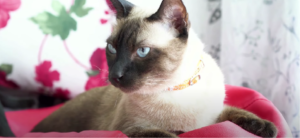
FAQ
What breed of cat has long legs?
Several breeds of cats have long legs, including the Chausie Cat, Serengeti Cat, Egyptian Mau, Bengal Cat, Arabian Mau, Turkish Angora, Serval Cat, Cornish Rex, Japanese Bobtail, Sphynx and Siamese.
Are Long Legged Cats intelligent?
Yes! All of the long legged cats listed above are known for their intelligence and can be trained to do tricks.
Are Long Legged Cats good pets?
Most of the long legged cat breeds listed above make excellent pets, with the exception of the Serval Cat which is not recommended as a pet due to its wild nature and tendency to escape when given the chance.
What colours do Long Legged Cats come in?
Long legged cats can come in a variety of colours, depending on the breed. Most have coats that range from solid colours like brown, black, or silver to spotted tabbies with different markings. Some breeds, like the Sphynx, are hairless and their skin comes in shades of pink, black, or grey.
What cat has a long body and long legs?
The Chausie Cat is a breed that has a long body and long legs. Their coats come in shades of silver, bronze, or black. They are also known for their intelligence and can be trained to do tricks!
What cat has longer back legs?
The Bengal Cat is a breed that has longer back legs. Their coats come in shades of brown, black, or silver with unique markings. They are known for their intelligence and can be trained to do tricks!
What cat has long legs and no tail?
The Japanese Bobtail is a breed that has long legs and no tail. They have large ears, fluffy fur, and their coats come in shades of white, black, or brown. They are known for their intelligence and can be trained to do tricks!
What breed of cat has longer back legs than the front?
The Egyptian Mau is a breed of cat that has longer back legs than the front. They have a spotted coat, large ears, and their coats come in shades of silver or bronze. They are known for their intelligence and can be trained to do tricks!
What cat has back legs like a rabbit?
The Serval Cat is a breed of cat that has back legs like a rabbit. They have a spotted coat and their coats come in shades of brown, black, or yellow. This breed is not recommended as a pet due to its wild nature and tendency to escape when given the chance.
What cat has long legs and big ears?
The Turkish Angora is a breed of cat that has long legs and big ears. They have a luxurious coat and their coats come in various colours including cream, white, or blue. They are known for their intelligence and can be trained to do tricks!
What breed of cat has long legs and a muscular body?
The Sphynx is a hairless breed that has long legs and a muscular body. They have large ears, and their skin comes in shades of pink, black, or grey. They are known for their intelligence and can be trained to do tricks.
What cat has long legs and a spotted coat?
The Arabian Mau is a breed of cat that has long legs and a spotted coat. They have large ears, and their coats come in shades of brown, black, or silver with unique markings. They are known for their intelligence and can be trained to do tricks!
What breed of cat has long legs and a short tail?
The Cornish Rex is a breed of cat that has long legs and a short tail. They have wavy fur, large ears, and their coats come in shades of brown, black, or silver. They are known for their intelligence and can be trained to do tricks!
What breed of cat has an unusually long body?
The Savannah Cat is a breed of cat that has an unusually long body. They have large ears, and their coats come in shades of brown, black, or silver with unique markings. They are known for their intelligence and can be trained to do tricks!
What breed of cat has a unique mosaic coat pattern?
The Bengal Cat is a breed of cat that has a unique mosaic coat pattern. They have large ears, and their coats come in shades of brown, black, or silver with unique markings.
They are known for their intelligence and can be trained to do tricks! This breed is not recommended as a pet due to its wild nature and tendency to escape when given the chance.
What breed of cat has thick fur and long legs?
The Maine Coon is a breed of cat that has thick fur and long legs. They have large ears, and their coats come in shades of brown, black, or grey with distinctive stripes.
They are known for their intelligence and can be trained to do tricks! This breed is a popular pet due to its friendly nature and affectionate personality.
How do I care for a long-legged cat?
Caring for a long-legged cat is similar to caring for any other type of cat. It is important to ensure that they have access to clean water and food, receive regular health checkups and vaccinations, are kept in a safe environment, have plenty of toys and scratching posts, and get plenty of exercise.
Additionally, it is important to groom them regularly and keep their coats brushed and matt-free. Finally, provide your long-legged cat with lots of love and affection to ensure they lead a happy and healthy life!
How can I train my long-legged cat?
Training your long-legged cat is similar to training any other type of cat. It is important to use positive reinforcement, such as treats and verbal praise, when rewarding desired behaviours.
You should also provide consistent training sessions that are short in length and focus on one behaviour at a time. Additionally, use a relaxed and playful attitude to ensure that the cat is engaged and motivated.
With patience, consistency, and positive reinforcement techniques, you will be able to successfully train your long-legged cat in no time!
How do I know if a long-legged cat breed is the right choice for me?
When deciding if a long-legged cat breed is the right choice for you, it is important to consider your lifestyle and home environment. Long-legged cats need plenty of space to roam and play, so make sure that you have an area where they can explore safely.
Additionally, they need to be groomed regularly and receive regular health checkups. If you are willing and able to provide the necessary care for a long-legged cat, then it could be the perfect fit for you!
How do I find a reputable breeder of long-legged cats?
When looking for a reputable breeder of long-legged cats, it is important to research various breeders and ask questions.
Speak with the breeder directly and ask about their experience, health tests they perform on the cats, and what type of socialisation the kittens receive.
How do I choose the right long-legged cat breed for me?
When choosing the right long-legged cat breed for you, it is important to consider your lifestyle and home environment. Different breeds have different personalities, coat types, and needs. Some may be more suited to an indoor or outdoor lifestyle, so make sure that you research each breed thoroughly before making your decision.
Additionally, talk to a veterinarian or experienced cat owner for further advice and guidance. With the right research and knowledge, you can find the perfect long-legged cat breed for you!
How do I introduce my new long-legged cat to my home?
When introducing a new long-legged cat to your home, it is important to provide them with a safe and comfortable environment. Allow the cat some time alone in a quiet room away from other animals to adjust and acclimate.
Additionally, offer plenty of food and water as well as litter boxes and scratching posts to ensure that they can express their natural behaviours. With patience, love, and understanding, your new long-legged cat will be a part of the family in no time!
How do I tell the difference between male and female long-legged cats?
The easiest way to tell the difference between male and female long-legged cats is by looking at their genitalia. Female cats have an inverted V shape, while males have a circular appearance.
Additionally, male cats tend to be larger than females and may have more prominent facial features. It is important to note that it can be difficult to accurately identify the sex of a kitten, so it’s best to seek out the help of a professional if you are unsure.
Why is it important to spay or neuter my long-legged cat?
Spaying and neutering your long-legged cat is an important part of responsible pet ownership. Spaying and neutering can help prevent the spread of diseases, reduce behavioural problems, and decrease the risk of certain types of cancers.
Additionally, it helps to reduce the number of homeless cats and kittens in the world as it prevents unplanned litter. By spaying or neutering your long-legged cat, you can help keep them healthy and happy for years to come!
Why is it important to groom my long-legged cat?
Grooming your long-legged cat on a regular basis is an essential part of providing them with the best care. Regular brushing helps to keep their coat healthy and free of mats and tangles, as well as removing dirt, dander, and other irritants.
Additionally, grooming helps to reduce shedding and the risk of skin infections. Grooming also helps to keep nails trimmed and keeps your long-legged cat looking their best!
Why is it important to provide my long-legged cat with veterinary care?
Providing your long-legged cat with regular veterinary care is an essential part of keeping them healthy and happy. Regular checkups help to identify any medical issues early on, allowing for quick treatment and a much better prognosis.
Additionally, vaccination helps to prevent the spread of certain diseases, as well as keeping your cat up to date on parasites and flea control. With proper veterinary care, you can give your long-legged cat the best life possible!
Does my long-legged cat need to exercise?
Long-legged cats require physical and mental stimulation in order to stay healthy and happy. Regular playtime helps to keep them active and engaged, as well as providing an outlet for their natural hunting instincts.
Additionally, regular walks or trips outside allows your cat to explore the outdoors safely. By providing your cat with regular exercise and mental stimulation, you can keep them healthy and content for years to come!
Does my long-legged cat need to be trained?
Training your long-legged cat is an important part of providing them with the best care. Training helps to ensure that they understand and obey basic commands, such as coming when called or not jumping on furniture.
Additionally, training can help to reduce problem behaviours, such as excessive meowing or scratching furniture. With patience, love, and consistency, your long-legged cat can learn the basics quickly and easily!
Do long-legged cats need special care?
Yes, long-legged cats require special care in order to stay healthy and happy. These cats can be more prone to injuries due to their longer limbs, so it is important to provide them with plenty of sturdy scratching posts and perches.
Additionally, it is important to keep their joints flexible by providing them with regular exercise and playtime. With the right care, your long-legged cat can live a healthy, happy life!
Does my long-legged cat need any special diet?
Yes, your long-legged cat may require a specialised diet in order to stay healthy. Due to their longer limbs and larger frames, these cats may require higher levels of certain vitamins and minerals in order to maintain optimal health.
Additionally, it is important to provide them with high-quality food that is specifically designed for cats. With the right diet, your long-legged cat can stay healthy and happy for years to come!
Does my long-legged cat need to be spayed or neutered?
Yes, it is highly recommended that you have your long-legged cat spayed or neutered. Doing so can help to reduce problem behaviours such as roaming and aggression, as well as reducing the risk of certain diseases.
Additionally, spaying or neutering helps to decrease the number of homeless cats and reduce overpopulation. With proper spaying or neutering, your long-legged cat can live a healthy, happy life!
Do long-legged cats have any special grooming needs?
Yes, long-legged cats may require additional grooming in order to stay healthy and looking their best. Brushing helps to remove loose hair and debris from their coat, as well as helping to distribute natural oils for a glossy shine.
Additionally, bathing can help to reduce shedding, as well as keeping their coat free of dirt and debris. With regular grooming, your long-legged cat can have a beautiful, healthy coat!
Does my long-legged cat need regular vet visits?
Yes, it is important for your long-legged cat to visit the veterinarian regularly. Regular checkups are essential in order to maintain your cat’s overall health and well being. During these visits, the vet will perform a physical exam, take vital signs, and provide preventative care such as vaccinations and parasite control.
Additionally, regular checkups can help to detect any developing health problems early so that they can be treated quickly and effectively. With regular vet visits, your long-legged cat will stay healthy for years to come!
Do long-legged cats require regular exercise and mental stimulation?
Yes, long-legged cats need plenty of exercise and mental stimulation in order to stay healthy and content. Providing your cat with toys and interactive playtime can help to keep them active while also stimulating their natural hunting instincts.
Additionally, providing them with scratching posts and perches can help to keep their joints flexible and give them a place to rest and relax. With regular exercise, mental stimulation, and good nutrition, your long-legged cat will stay healthy and active for many years!
Does my long-legged cat need any special training?
Yes, it is important to provide your long-legged cat with basic obedience training in order to keep them safe and well behaved. Teaching them simple commands such as sit, stay, and come can help to prevent problem behaviours such as jumping on counters or furniture, scratching at walls and other inappropriate objects.
Additionally, teaching them basic manners such as not begging for food or jumping on visitors can help to make them better companions. With the right training, your long-legged cat can be a well-behaved member of the family!
Do long-legged cats have any special health concerns?
Yes, long-legged cats can be prone to certain genetic health issues due to their unique physical traits. It is important to be aware of these potential issues and take steps to prevent them.
Common problems include luxating patellas (where the kneecap slides in and out of place), hip dysplasia (where the hip socket is not properly formed), and heart murmurs
Additionally, long-legged cats may be susceptible to ear infections and eye problems due to their unique anatomy.
Does my long-legged cat need any special diet?
Yes, your long-legged cat should have a well balanced diet in order to stay healthy and energetic. A good quality dry kibble is recommended for their daily nutrition, as it provides all of the essential vitamins and minerals they need for optimal health.
Additionally, wet food can be given as an occasional treat. It is important to avoid feeding your cat table scraps or people food, as this can lead to digestive problems and weight gain.
Can I get my long-legged cat declawed?
No, it is not recommended to have your long-legged cat declawed. Declawing is an invasive and painful surgery that can lead to long-term health issues such as infections, lameness, and chronic pain.
Additionally, declawing does not address behavioural issues and can actually make them worse. It is best to provide your long-legged cat with plenty of scratching posts and use positive reinforcement techniques such as clicker training to teach them appropriate behaviours.
Can I take my long-legged cat outside?
Yes, you can take your long-legged cat outside if they are supervised at all times. It is important to keep them on a leash or in a secure enclosure so that they cannot escape and become lost or injured.
Additionally, it is recommended to have them microchipped in case of an emergency and ensure that their vaccinations are up to date. With the proper precautions, your long-legged cat can enjoy the great outdoors!
Can long-legged cats live with other animals?
Yes, long-legged cats can live peacefully with other animals as long as they are properly introduced and given time to adjust. It is important to provide all of the animals in the home with plenty of space, food, toys, and attention so that everyone is happy and healthy.
Additionally, it is important to keep an eye on interactions between animals and intervene if necessary. With patience and understanding, your long-legged cat can make a great addition to any home!
Which breeds of long-legged cats are the most popular?
The most popular long-legged cat breeds include Siamese, Maine Coon, Persian, and Ragdoll.
All of these breeds are known for their beautiful coats, loyal personalities, and intelligence. Additionally, they all have unique physical traits such as long legs, big ears, and expressive faces.
Which breed of long-legged cat is right for me?
The best way to determine which breed of long-legged cat is right for you is to research each individual breed and understand the differences between them.
Consider your lifestyle, what type of personality you are looking for in a pet, and any specific needs or requirements that must be met.
Can I show my long-legged cat in competitions?
Yes, many long-legged cat breeds can be shown in competitions. These shows provide an opportunity for breeders and owners to showcase their cats and compete for titles or awards.
Most of these shows have strict guidelines regarding acceptable traits, so it is important to research each competition before entering your cat.
Can I breed my long-legged cat?
Yes, you can breed your long-legged cat if they meet certain criteria. It is important to understand the genetic background of both cats in order to ensure that all kittens will be healthy and viable. Additionally, breeding should only be done for the purpose of improving a particular breed and with careful consideration given to the physical and psychological health of all cats involved.
Useful Video: Cat Breeds With Very Long Legs
Conclusion
In conclusion, whatever your preference might be, one of these feline champs could be the perfect companion for you. With their strikingly different appearances and varied personalities, long legged cats are sure to capture your imagination and melt your heart in equal measure.
Whether you’re looking to show off a sleek Siamese or simply want a furry friend to snuggle in your lap, finding the right breed might just be the purrfect decision. Long legged felines may require extra care and attention but they surely return all that love tenfold with their unique personalities and playfulness.
This article has hopefully given you an insight into the wide range of breed choices when it comes to long-legged cats so why not find out more about them today? They truly make wonderful, lifelong companions that bring a lot of joy into any home!
References:
- https://www.petsgal.com/cat-breeds-with-very-long-legs/
- https://www.bubblypet.com/cat-breeds-with-long-legs/




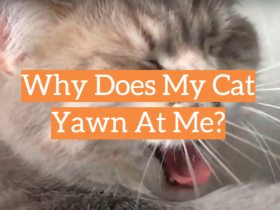
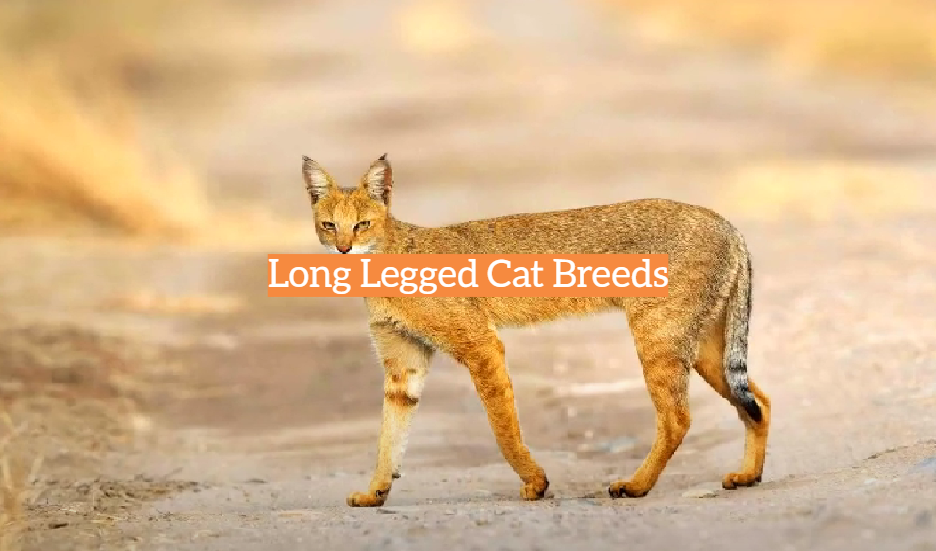

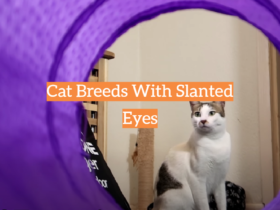
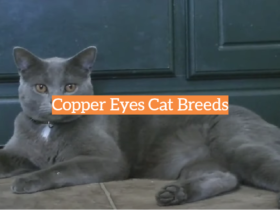

Living with a Oriental Shorthair cat has been an experience in appreciating the elegance of long-legged feline companions. The slender build and long legs of the Oriental Shorthair give them a graceful appearance, almost like a feline ballet dancer. Their agility is astounding, and watching them move with such fluidity and poise showcases the unique beauty that long-legged cat breeds bring to a household. It’s as if every step they take is a small, graceful dance.
The charm of my Balinese cat lies not only in their luxurious semi-long fur but also in their remarkably long legs. Balinese cats, often considered a long-haired variant of the Siamese, possess a sleek and elongated body. Their long legs contribute to their regal stature, creating a visual impression of a cat with a royal presence. It’s fascinating how the length of their legs enhances the overall majestic aura of the Balinese breed.
Adopting a Savannah cat introduced me to the captivating world of long-legged felines with a wild touch. Savannah cats, known for their serval ancestry, boast not only a spotted coat but also incredibly long legs. The sight of my Savannah cat confidently striding across the room is reminiscent of a small wildcat on the prowl. Their long legs not only contribute to their striking appearance but also underscore their athletic and adventurous nature.
The Maine Coon, with its tufted ears and bushy tail, also stands out for its impressively long legs. Living with a Maine Coon, I’ve observed that their long legs not only add to their substantial size but also play a role in their agility. Despite their large stature, Maine Coons are surprisingly agile climbers, and their long legs give them the ability to navigate vertical spaces with ease. It’s a testament to how the combination of size and leg length contributes to the unique charm of this breed.
Welcoming a Peterbald cat into my home has been an introduction to the allure of long-legged cats with a distinct coat. The Peterbald, known for its sleek and nearly hairless appearance, showcases an elegant body with notably long legs. Their leggy build, combined with their unique coat texture, creates a captivating visual contrast. It’s as if their long legs are a testament to the breed’s refined and sophisticated aesthetic, making them a truly distinctive feline companion.
Living with a Cornish Rex cat has given me a firsthand look at the charm of long-legged felines with a unique coat texture. The Cornish Rex’s slender body and long legs, coupled with their soft, curly fur, create a delightful combination. Their legs seem to add to the overall sleekness, making them look like elegant feline athletes. It’s like having a cat with the physique of a runway model, showcasing the beauty that comes with the combination of long legs and a distinct coat.
Adopting a Turkish Angora cat into my family has been an exploration of the elegance that comes with long-legged breeds. The Turkish Angora’s long, fine legs contribute to their refined appearance, emphasizing their graceful movements. Their legs seem almost like delicate columns supporting a work of feline art. It’s a unique blend of sophistication and playfulness, reminding me that the length of a cat’s legs can be a defining feature in their overall charm.
The presence of a Somali cat in my home has been a lesson in appreciating the beauty of long-haired breeds with, quite literally, a leg up. Somali cats, with their bushy tails and long legs, have a distinctive appearance that’s both regal and playful. The length of their legs seems to add a level of elegance to their bounding and leaping, making every interaction with my Somali cat a visual treat. It’s fascinating how the combination of a flowing coat and long legs creates a striking and memorable presence.
Welcoming a Nebelung cat has been an introduction to the allure of long-legged felines with a luxurious coat. Nebelungs, often described as long-haired Russian Blues, possess slender bodies and notably long legs. Their elegant build, coupled with their shimmering silver-blue coats, gives them an almost ethereal quality. The length of their legs seems to accentuate the overall refinement of the Nebelung breed, making them a captivating addition to any cat lover’s home.
The experience of living with a Javanese cat has highlighted the enchantment that comes with long-legged breeds possessing a silky coat. Javanese cats, akin to the Balinese and Siamese, showcase an elegant body with notably long legs. Their legs, combined with their flowing coat, create a visual spectacle that’s both graceful and sophisticated. It’s as if their long legs are a canvas upon which the beauty of their silky fur is showcased, making the Javanese cat a truly captivating companion.
Having a LaPerm cat in my home has been a delightful exploration of the unique combination of curly fur and long legs. The LaPerm’s distinctive coat, coupled with their elegant leggy build, creates an endearing and visually striking appearance. It’s like having a cat with a charming mix of playfulness and sophistication, showcasing how the length of their legs contributes to their overall character.
The Siberian cat, with its luxurious triple-layered coat, has revealed to me the enchantment of long-legged felines with a strong and robust build. Siberians are known for their forest cat appearance, and their long legs contribute to their powerful and agile frame. Watching my Siberian cat confidently traverse various heights and spaces is a testament to the role their long legs play in both their physical prowess and majestic presence.
Living with a Munchkin cat has brought a daily dose of cuteness and charm into my life. While Munchkins are famed for their short legs, they still fall into the category of long-legged breeds when considering their body proportion. The unique combination of a compact body and relatively long legs creates an adorable and endearing appearance. It’s like having a forever kitten with a playful and lovable demeanor.
My experience with a Ragamuffin cat has been an exploration of the gentle and affectionate nature that often accompanies long-legged feline companions. The Ragamuffin’s long, silky coat, combined with their sturdy build and proportionate legs, contributes to their cuddly and inviting appearance. Their long legs seem to enhance their huggable quality, making them a perfect lap cat with an irresistibly charming presence.
Adopting an American Curl cat has allowed me to appreciate the elegance that comes with unique curled ears and a long-legged physique. The American Curl’s curled ears, coupled with their graceful leggy build, create a distinct and captivating look. It’s fascinating how the length of their legs adds to the overall allure of this breed, making them a visual marvel with an endearing and charming personality.